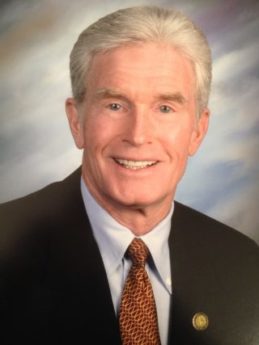HOME | ABOUT US | MEDIA KIT | CONTACT US | INQUIRE
HOME | ABOUT US | MEDIA KIT | CONTACT US | INQUIRE
June 2021
 Inflation exploded higher during April. Base effects added to the year-over-year figures had only a little to do with the unexpected inflation jump from March to April of this year. Instead, blame a combination of government stimulus, reflation, bottlenecks and roaring consumer demand for this recent surge in prices.
Inflation exploded higher during April. Base effects added to the year-over-year figures had only a little to do with the unexpected inflation jump from March to April of this year. Instead, blame a combination of government stimulus, reflation, bottlenecks and roaring consumer demand for this recent surge in prices.
Headline CPI rose 0.8 percent in April vs. March, for a 4.2 percent year-over-year gain (well above the consensus expectation of 3.6 percent). Core CPI (excluding food and energy) rose 0.9 percent for a 3.0 percent yearly increase, also well above the 2.3 percent consensus expectation. This represents the biggest monthly gain in headline CPI since 2009, as well as the biggest monthly CPI increase since energy prices spiked 9.6 percent in June 2009 (coming out of the last deep recession).
This recent core CPI increase was the biggest since a three-month streak from July to September in 1981, when aggressive rate hikes boosted mort-gage rates (which were the primary cost of housing in the CPI until the owner’s equivalent rent was introduced in 1982). On a year-over-year basis, cur-rent inflation increases were the biggest (in the core numbers) since January 1996.
Base effects impacted the year-over-year meas-urements, biasing the math upward—not only from huge drops in energy prices in April of last year, but also the first full month of pandemic-constricted demand, which crushed some core prices. There’s no weather-related explanation to argue away these massive monthly gains. This recent report is a strong confirmation that the supply-chain bot-tlenecks that firms have been complaining about are now causing much higher prices.
The single-biggest contribution to the core came from a 10.0 percent increase in used cars and trucks, which are in very short supply and cost 20.9 percent more than in February 2020, the last month before the pandemic. Used vehicle prices have been impacted by an extreme slowdown in new car and truck production, primarily caused by the significant shortage of re-quired microchips to complete new vehicles. A fire at a large chip-manufacturing plant in Japan is partly to blame for this shortage, while very high demand for electronic chips (from many other industries) may make current new vehicle production slowdowns last much longer than many people anticipate.
However, the biggest core CPI increase since September 1981 might not change the Fed’s mind about conditions justifying changes in monetary policy. Powell and the FOMC have—until now—insisted price increases should be transitory. Of course, they did not know how big these transitory increases would be. At the very least, this recent report demands extra work from the Fed to assure the markets that it is standing its ground and why. The biggest yield increases after recent announced numbers were in five- and seven-year Treasuries. The relative lack of movement in shorter yields reflects expectations that the Fed might not move for some time, while the smaller rise in long-term yields reflects the market’s questionable faith in the Fed’s ability to contain inflation in the long run.
Last week’s JOLTS (Job Openings & Labor Turnover Survey) figures were eye opening. The number of job openings climbed above 8 million for the first time—ever. The “quit rate” rose to 2.7 million, just shy of the record 2.8 million in January 2001. The Journal made the case that this JOLTS report refuted assertions by the White House economics team that generous unemployment benefits were not keeping people from working.
Worker movement could also be contributing to the hiring slowdown, be-cause many people no longer live where their old jobs were. New York City was the biggest loser, which should surprise no one. High taxes, massive service cuts, and COVID policies last spring (resulting in very high per-capita COVID infection and death rates) were devastating to morale.
New York state lost population, as did California. On the West coast, LA lost even more people than San Francisco. Seattle and Portland lost people too, though not to the same degree. Big Midwestern cities including Chicago and Minneapolis also lost people, but Chicago’s loss was offset in part by big illegal immigration.
Taxes and livability (crime, etc.) are not the only explanation for people’s decisions to leave some cities. COVID policies, personal freedoms and work-from-home rules were also big factors.
Nevertheless, policies matter, and it is no coincidence that people are leaving cities and states with the most burdensome taxes as well as a declining quality of life. For those who can move to a state with more personal freedoms, lower taxes and better living opportunities … well, why not?